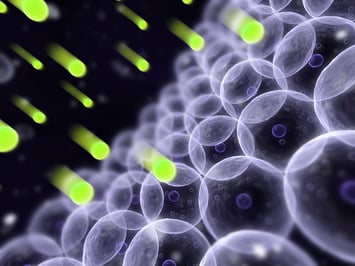
Oxidative damage to cells is associated with aging and the development of chronic diseases.
Oxidative damage can lead to the development of cancer, heart disease and diabetes. Almost every chronic disease is associated with oxidative stress. (Crinnion & Pizzorno, 2019)
Environmental toxicants significantly increase the oxidant load, some poison antioxidant enzymes and some induce proinflammatory epigenetic modification. This increases the risk of disease and the effects of aging.
Your body utilizes enzymes, glutathione, antioxidant compounds, and numerous diet related anti-oxidant compounds such as N-acetyl cysteine (NAC) ascorbic acid and other nutrients.
For normal cellular function, oxygen is necessary. When it is lacking, tissue hypoxia causes what has been termed the "oxidative stress paradox". During hypoxia or anoxia, there is an increase in oxidative stress which is often characterized by the severe damage of a stroke or myocardial infarction. (Crinnion & Pizzorno, 2019)
Toxic metals, organic pollutants, air pollution, Rx and OTC medications, radiation, solvents and "toxins of choice" can all lead to oxidative damage.
Metals including arsenic, cadmium, mercury and lead have been shown to cause increased DNA oxidation. Cadmium provokes reactive oxygen species (ROSs) which indirectly modulates gene expression and signal transduction and reduces activities of proteins involved in antioxidant defenses.
Organic pollutants, such as pesticides will lead to oxidative damage. Malathion is a commonly used pesticide that generates free radicals that induce oxidative stress in human erythrocytes.
Diesel exhaust particles are most likely one of the most toxic components of urban outdoor air pollutants. The mixture of carbon particles, organic chemicals, heavy metals and free radicals. Urban air is associated with respiratory and cardiac problems, even increased mortality rates.
NSAIDS, a "harmless" pain reliever is also known to increase oxidative stress by inducing ROSs in cardiac and cardiovascular related cells. This is a possible explanation for the increased risk of heart attack and stroke associated with NSAID used. (Crinnion & Pizzorno, 2019)
Known as "toxins of choice" , alcohol and tobacco are both known to cause oxidative damage. Alcohol consumption has been shown to facilitate ROS production, release cytokines, reduce antioxidants and promote an in vivo oxidative microenvironment. Inhalation induces decreased concentrations of circulating antioxidants, increased oxidation of GSH and increased DNA damage.
We are your environmental detox experts! If you think exposure to environmental toxins is causing your health issues , stop suffering, come see Dr. G at Second Nature Care where you can be tested in CT for heavy metal and nonmetal toxins that could be making you sick or infertile.
We offer proven treatments for environmental detoxification. I.V. ozone, clinical nutrition for detoxification, oral and I.V. chelation, RX homeopathic remedies for detoxification. Call us to schedule your environmental detoxification consult. All I.V. therapies are MD ordered in NYS.
Crinnion, W. J., & Pizzorno, J. E. (n.d.). 2019 Oxidative Damage and Inflammation. In Clinical Environmental Medicine Identification and Natural Treatment of Disease Caused by Common Pollutants (pp. 8–11). essay, Elsevier.


